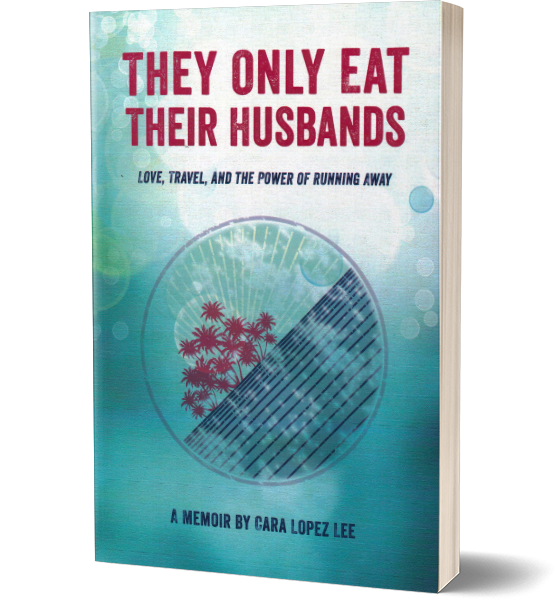The night before Revolution Day, David, Patricia, and I took their mother to El Pistolero, “The Gunfighter,” to celebrate her seventieth birthday. I suppose there was a certain revolutionary spirit in Carmela’s tossing back a beer in a bar with her son and daughter — an act of defiance against age, and time. We then spent the night in a motel with an old-fashioned wagon in the courtyard, and I thought, “So Mexico romanticizes its history, too.” We’d planned to go out for breakfast in the morning, but nothing in Nuevo Casas Grandes was open on El Día de la Revolución.

We’d stepped into a spaghetti western.
You see, 101 years ago, Francisco Madero ran for president against dictator Porfirio Diaz. But Diaz rigged the election and threw Madero in prison. Madero escaped to Texas, and on November 20, 1910, he called upon the Mexican people to revolt. On November 20, 2011, David declared, “My mom has to have her morning coffee!” So we stopped at a convenience store in Nuevo Casas Grandes to buy her coffee-to-go.
Casas Grandes was the site of one of the early battles of the revolution. About 100 people were killed, and federal forces defeated the rebels. These days in Nuevo (New) Casas Grandes you can buy individual, factory-made, plastic-packaged pumpkin empanadas, even on Revolution Day. I opted out. I just don’t like single-serving pies: American or Mexican. My stomach rumbled in revolt against a breakfast-free Sunday. One-hundred-one years ago, the whole country of Mexico rumbled in revolt against hungry Sundays-through-Saturdays.
The green-gold cottonwoods along the Casas Grandes River stretched into chill blue waking light. Wheaten desert grass cut a broad ribbon between low mountains. We turned onto a new road, a shock of shiny, zippy blacktop, to the village of Mata Ortiz: some 2000 people nestled before a comfy armchair of a mountain called El Indio.
We got out of the car at the smallest plaza I’ve ever seen, where Carmela plopped down on a bench as if she owned the joint. Patricia pointed down the dusty street, to a lone cowboy on horseback trotting our way. We’d stepped into a spaghetti western.

Warrior statues stood watch from a wooden fence.
The town consisted primarily of two long rows of homes, humble but not impoverished. A few abandoned adobe huts leaned here and there. But the other houses declared that this was an artist’s colony. A two-story home of cheerful yellow stucco winked at us with a blue door. Warrior statues stood watch from a wooden fence. One modern adobe home was smoothed, rounded, and painted an eye-aching blue that prompted me to say, “This reminds me of…” just as I spotted her name celebrated across the gateway arch: “Viva Frida Kahlo!”

The modern adobe home prompted me to say, “This reminds me of…” just as I spotted her name celebrated across an arch: “Viva Frida Kahlo!”
The adopted name of this town’s artisans adorned a metal plaque above most doorways: Ortiz. The village name, Mata Ortiz, had made me laugh the first time I’d seen it. I thought it meant “Kill Ortiz,” and the threat and humor implied made it seem a perfect hometown for my fictional Lopez family. So, in my historical novel, I’ve created a pueblo with a similar name. Patricia informed me that mata also means a “starting point” or “birthplace.” Actually, Mata Ortiz was named for Juan Mata Ortiz, a local hero who won a battle against Apaches in 1880. But I like the idea of it being a birthplace — of the Mata Ortiz artists’ movement, which began with one boy in the 1970’s.
When Juan Quezada was twelve he quit school to help support his family. While gathering wood in the mountains, he found pottery shards left behind by the ancient Paquimé people. He taught himself to recreate their style, and added his own creativity – working with fingers and knives, and using cow manure to fire the pots. An American bought some pots to sell, and a few ended up in the hands of an anthropologist, who came to Mexico to find Juan and offered him a stipend to dedicate himself to his art. Juan has passed his ceramic skills on to his family, who have passed it on to their families and neighbors. Today, Mata Ortiz boasts some 400 artisans.

Juan Quezada taught himself to recreate their style, and added his own creativity.
All 400 of them still seemed asleep this quiet morning, except for a couple of guys brushing horses in backyards, and a miniscule but ferocious black mutt defending his front yard. When I strolled off to explore the town, Carmela admonished her daughter Patricia, “You go after her. I don’t want someone to take her!” As if an artist might emerge from the silence, kidnap me, and bake me in a kiln.
As Patricia and I walked down the street, a middle-aged woman stepped out of her house and sang in a three-note legato, “¿Quieren-ollas?” (You-want-pots?) We did. She let us in through the bedroom, past the unmade bed, to a tiny dining area. A table filled the room with pots vastly different from the classic red, white, and black designs I’d seen on the Mata Ortiz website. Her husband and son were the artists: a soft-spoken man and a teenager rubbing sleep from his eyes.

The father showed how he picked each divot into the clay with a small knife.
Their pieces were a unique blend of prehistoric and ultra-modern. Some were unfired, but most were shiny black, thanks to long firing times in the quemada, or kiln. All had tiny repetitive designs, and the father showed how he picked each divot into the clay with a small knife. The son made black pots that looked like a cross between metallic flying saucers and woven baskets. As an experienced haggler, I tried not to act too eager, but I knew I’d buy one. The son seemed startled by my interest. Perhaps most tourists come here to enter a prehistoric time-warp? If so, he’d taken a risk in making these. They were fantastic.

Perhaps most tourists come here to enter a prehistoric time-warp? If so, he’d taken a risk in making these.
Patricia and I said we’d look around first and come back. When we stepped outside, David and Carmela where in the car, creeping down the road, searching for us.
We didn’t know how to approach the next potter. Sure, there was probably one in every house, but was it proper to knock uninvited? We didn’t have to: twice more, women approached and asked that musical question, “¿Quiren-ollas?” and in we walked to a house or shop.
But my heart belonged to the alien black saucer basket. So I returned and bargained. Someone once told me a deal is good when both buyer and seller are smiling. The deal was good. If I’d bought the same piece in Santa Fe it would have cost much more, but then it wouldn’t have cost me a trip through the drug-war territory of Chihuahua, Mexico.

We then visited the village’s river, Río Palanganas, tributary of the Río Casas Grandes.
We then visited the village’s river, Río Palanganas, tributary of the Río Casas Grandes. Rivers play an important role in this desert and in my novel – offering both a means of survival and a perilous barrier to escape. This one was an algae-lined trickle. Falling in would be a mucky, chilly pain-in-the-ass, but not deadly. It was pretty: ducks lolling, water mirroring, trees arguing whether it was spring or fall.

Carmela marched ahead of us, up a grassy hill topped by a humble pair of Catholic shrines.
We crossed the main road to a grassy hill topped by a humble pair of Catholic shrines. Carmela marched ahead of us to the top. Spread below us, I saw the fictional pueblo and valley from my novel, almost as I’d dreamed them: an old painting of one of the final places of peace before war arrives. But Carmela saw something else: a mirage of the mountain village where her seven sons and daughters were born. “It’s just like Terrero,” she told Patricia, with a smile and a sigh.

Carmela saw a mirage of the mountain village where her seven sons and daughters were born. “It’s just like Terrero,” she told Patricia.
At the edge of town, people, horses, cars, and wagons began lining up to celebrate Revolution Day. We returned to watch a parade so short it brought nostalgic tears to my eyes — which makes no sense because I’m from Los Angeles. Cheerleaders performed gymnastics, and one boy flipped from the top of a pyramid and fell on his back, drawing a puzzling cheer from the spectators. Schoolchildren waved swirling ribbons. Donkeys and cars pulled wagons full of children wearing swirling skirts and magic-marker Zapatista mustaches. When a cartload of kids shouted, “¡Viva México!” I imagined them thinking “¡Viva Mata Ortiz!” a town proud of creating art from earth.


Donkeys and cars pulled wagons full of children wearing swirling skirts and magic-marker Zapatista mustaches.
The three-hour drive back to Juarez was uneventful. As we drew within some twenty kilometers of the city, Patricia pointed out the great white silhouette of a horse, painted high on a mountainside. It marked the ranch of a drug cartel. “To let us all know who’s boss.” She told me about the dead bodies the gangs often leave hanging under the city’s bridges for everyone to see. She said it filled her with coraje: rage.
One-hundred-one years after the Revolution, was it worth it? Marching in a parade to celebrate a war for freedom isn’t the same as being free. There’s a new war in Mexico, and for now the bad guys seem to be winning. Still, I brought home a lustrous black olla, and wherever people can create art – even art as dark as night – there’s still hope.
(The names of the modern people in this story have been changed for their safety, except Juan Quezada.)




